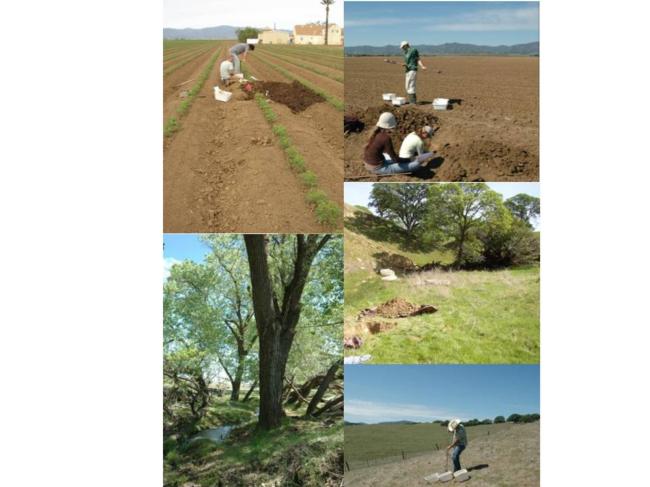Land Use History, Biodiversity, and Ecosystem Services

Several different approaches are underway in our lab group to study land use, biodiversity and ecosystem services. One is through involvement in the discussions and action agenda to increase the use and conservation of biodiversity agricultural landscapes for the provision of ecosystem services and human well-being. Several review articles have been written, often in collaboration with the members of the DIVERSITAS agrobiodiversity network, which is no longer in existence. A science agenda for the network was published several years ago. A recent analysis of agrobiodiversity management was made in a social-ecological context across a global set of research regions.
Most of our field research has been conducted in the agricultural ecosystems of western Yolo County, California, to examine the effect of agricultural intensification on plant and soil biota, and on soil quality and nutrient retention. This has been done in cooperation with farmers and ranchers. We have been combining GIS and field approaches to sample in a representative manner across the landscape. Grazed oak savannas tend to have higher plant diversity and more complex communities of soil biota than irrigated row crops. But preliminary data from a reserve nearby is suggesting that biodiversity and nutrient cycling is much higher. We are also interested in how restoration sites fare in terms of plant and soil biodiversity, and nutrient retention. The main focus of the restoration research is along waterways and creeks, due to their relevance for water quality.
Two other recent projects focused on agricultural landscapes composed of a mosaic of agroecosystems and high-biodiversity woodlands and forests, and the effects of land use change. One project evaluated carbon stocks across a vineyard-woodland landscape in Mendocino County (Fetzer Vineyards); despite the large carbon contribution of these woodlands, they have no role in current California greenhouse gas mitigation policy. The other study was conducted in a biosphere reserve in Chiapas, and showed the effects of distance from a village on tree biodiversity and cover. Both studies used a combined GIS - field sampling approach to describe land use patterns and also include detailed data on the species composition of woody trees and shrubs.
With the loss or degradation of >90% of the riparian ecosystems in California, riparian restoration on rangelands can help the recovery of plant communities, wildlife and bird populations, and increase carbon storage, nutrient retention, water quality, and habitat for aquatic organisms. A project with Audubon California and funding from a NRCS CIG grant has been conducted to provide site assessment and management guidelines for habitat planning for the rangeland riparian corridors that rim the Central Valley of California.